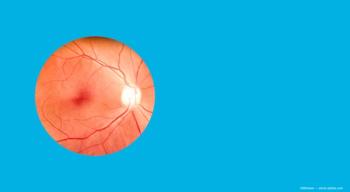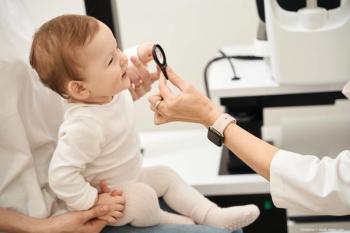
AAO LIVE: Study compares dry eye disease in adult, pediatric populations in IRIS registry
During a presentation at the American Academy of Ophthalmology’s 2022 annual meeting in Chicago, Vivian Paraskevi Douglas, MD, DVM, MBA, MSc, detailed a study in which investigators used the extensive data in the American Academy of Ophthalmology IRIS Registry to study the difference between the pediatric and adult populations.
A study of dry eye disease (DED) in children found that the average age of onset of DED is at 12.51 years compared with the average of 61.06 years in adults. The highest prevalence in children was seen between 12 to 15 years of age, according to lead author Vivian Paraskevi Douglas, MD, DVM, MBA, MSc, and colleagues from Massachusetts Eye and Ear, Department of Ophthalmology, Harvard Medical School, Boston.
Although DED is highly prevalent in adults, with rates ranging from 5% to as high as 50%, little is known about the disorder in pediatric patients, which sparked the interest in this study.
IRIS Registry data
The investigators used the extensive data in the American Academy of Ophthalmology Intelligent Research in Sight (IRIS) Registry to study the difference between the pediatric and adult populations.
Almost 5 million patients in the IRIS Registry had received at least one diagnosis of DED between 2013 and 2019; of those, 203,171 were children under 18 years of age and 4,592,808 were adults.
Douglas and associates collected data on biologic sex, race, ethnicity, and US geographic region of residence.
The data breakdown showed that DED was diagnosed in females significantly more often compared with males. More cases of DED were diagnosed among white adults and children compared with Asian and Black/African American patients. More cases were diagnosed among non-Hispanic and Latino children and adults compared with Hispanic/Latino patients, and more cases were diagnosed in patients in both age groups in the North Central and Northeast regions of the US.
Among the pediatric patients, DED had higher prevalence rates in those with refractive errors and eyelid/conjunctival disorders, the authors reported.
Regarding seasons, springtime had the highest prevalence of DED and winter the lowest among the pediatric population.
“Until recently, pediatric dry eye disease has been an under-recognized disease due to diagnostic limitations and challenges of interpreting the symptoms in children,” Douglas and her mentor, Aisha Traish, MD, concluded. “We are excited about the potential for big data to provide insight that informs our care for this segment of the population.”
Newsletter
Don’t miss out—get Ophthalmology Times updates on the latest clinical advancements and expert interviews, straight to your inbox.


















































.png)


